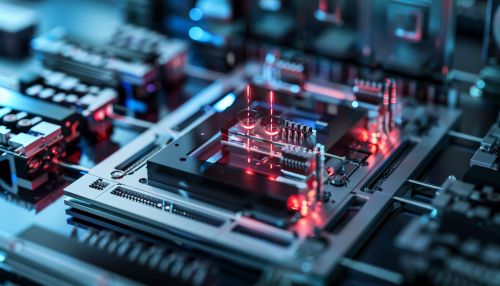Photonic Sensors
Introduction
Photonic sensors are a type of sensor that use photonics technology to detect changes in physical quantities. They are used in a wide range of applications, from industrial manufacturing to healthcare, and are known for their high sensitivity, fast response times, and ability to operate in harsh environments.


Principles of Operation
Photonic sensors operate based on the principles of photonics, the science and technology of generating, controlling, and detecting photons, which are particles of light. These sensors typically consist of a light source, a photonic crystal, and a detector. The light source emits light that is directed towards the photonic crystal. When the physical quantity being measured changes, it alters the properties of the photonic crystal, which in turn changes the way the light interacts with it. This change is detected by the detector, which converts it into an electrical signal that can be measured and interpreted.
Types of Photonic Sensors
There are several types of photonic sensors, each designed to measure a specific physical quantity. These include:
Fiber Optic Sensors
Fiber optic sensors are a type of photonic sensor that use optical fibers to detect changes in temperature, pressure, strain, and other physical quantities. They are known for their high sensitivity and ability to operate in harsh environments.
Photonic Crystal Sensors
Photonic crystal sensors are another type of photonic sensor that use photonic crystals to detect changes in the properties of light. These sensors are often used in applications that require high sensitivity and precision.
Surface Plasmon Resonance Sensors
Surface plasmon resonance sensors are a type of photonic sensor that use the phenomenon of surface plasmon resonance to detect changes in the refractive index of a material. They are often used in applications that require high sensitivity and specificity, such as biosensing.
Applications
Photonic sensors are used in a wide range of applications, including:
Industrial Manufacturing
In industrial manufacturing, photonic sensors are used to monitor and control processes, detect defects, and ensure product quality. They are particularly useful in applications that require high precision and reliability, such as semiconductor manufacturing and precision engineering.
Healthcare
In healthcare, photonic sensors are used to monitor patient vital signs, detect diseases, and guide surgical procedures. They are particularly useful in applications that require non-invasive monitoring and high sensitivity, such as cardiovascular monitoring and cancer detection.
Environmental Monitoring
In environmental monitoring, photonic sensors are used to detect and measure pollutants, monitor air and water quality, and track climate change. They are particularly useful in applications that require long-term monitoring and high sensitivity, such as air pollution monitoring and water quality testing.
Future Trends
The field of photonic sensors is expected to continue to grow in the coming years, driven by advances in photonics technology and increasing demand for high-performance sensors in various applications. Key trends in the field include the development of new types of photonic sensors, such as quantum photonic sensors, and the integration of photonic sensors with other technologies, such as microelectronics and nanotechnology.
